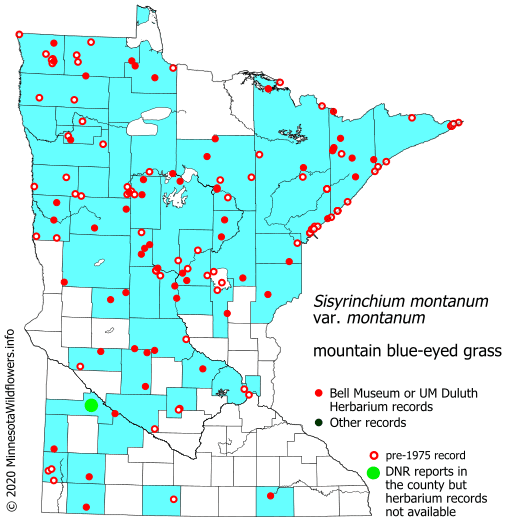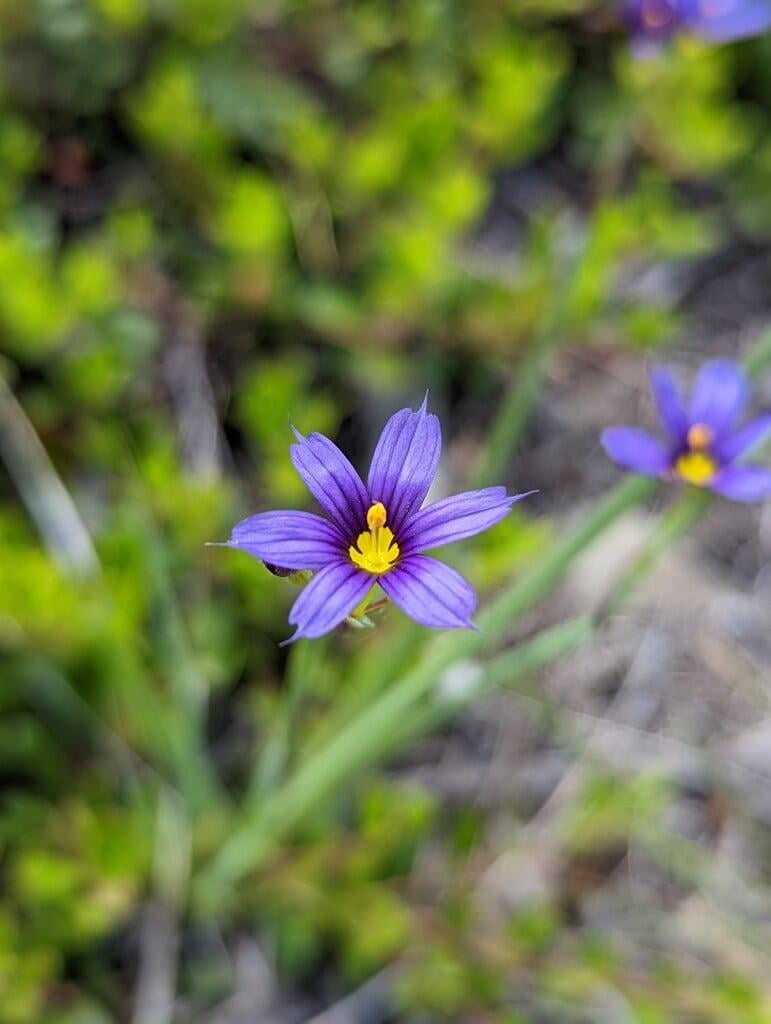Sisyrinchium montanum
Blue-eyed grass Description:
Sisyrinchium montanum, commonly known as strict blue-eyed grass, is a native plant species found in the western United States and Canada. It is a small herbaceous perennial that grows up to 20 inches tall and produces beautiful blue-violet flowers in the spring and early summer. Sisyrinchium montanum prefers sunny to partially shaded areas with well-drained soils, and it is commonly found in open woodlands, meadows, and prairies. The plant has thin, grass-like leaves that can grow up to a foot long, and it spreads by rhizomes to form dense patches.
Sisyrinchium montanum is an important plant for plant conservation and ecology. It is an excellent pollinator plant, attracting bees, butterflies, and other pollinators with its beautiful flowers. The plant is also used in traditional medicine by Native American tribes for a variety of ailments, including headaches, fever, and stomach pain. Additionally, the leaves and flowers of Sisyrinchium montanum are edible and can be used in salads, soups, and stews. The plant has also become popular as an ornamental plant in gardens, particularly for its attractive flowers and low-maintenance nature. Sisyrinchium montanum is a drought-tolerant plant that requires minimal care, making it an ideal choice for xeriscaping and sustainable landscaping projects.
Native Range:
Blue-eyed grass can be found in the northern most states in the continental United States, from Washington to Maine. There is also a southern range which reaches from Montana south to Texas. In Minnesota, Blue-eyed grass is primarily found in the central and Northern regions of the state with scattered dispersement in the more southern regions of the state.
Standard Plant Information:
Plant Height: 5" - 20" inches
Bloom Time: May - June
Preferred Habitat: Does well in full sun and moist to average sandy soils. Often found in fields, meadows, and roadsides.
Sowing:
For most homeowners, the best option is to scatter seed on the ground by hand broadcasting at a minimum of 16-64 pls ounces per acre. For even coverage, we recommend that you broadcast seed in perpendicular rows across the site to ensure even coverage.
You’ll want to broadcast any grass seed first, which will get raked into the soil lightly. Next, it is ideal to mulch the area lightly with either a clean (no seed) straw or preferably with our native Little Bluestem straw, sold at our retail garden centers. After a light mulching is complete, now it’s time to broadcast your native wildflower seeds, which should not be raked into the soil. A good rain or watering is sufficient to cover the seed.
Planting:
Simply dig a hole in the soil slightly larger than the plant’s roots. Ensure that the soil line of the plant is maintained during the transfer (i.e. the plant should be at the same level with the ground as it was in the pot). Pack any loose dirt back around the plant and make sure you water it well the same day to ensure it has the best chance of survival.










